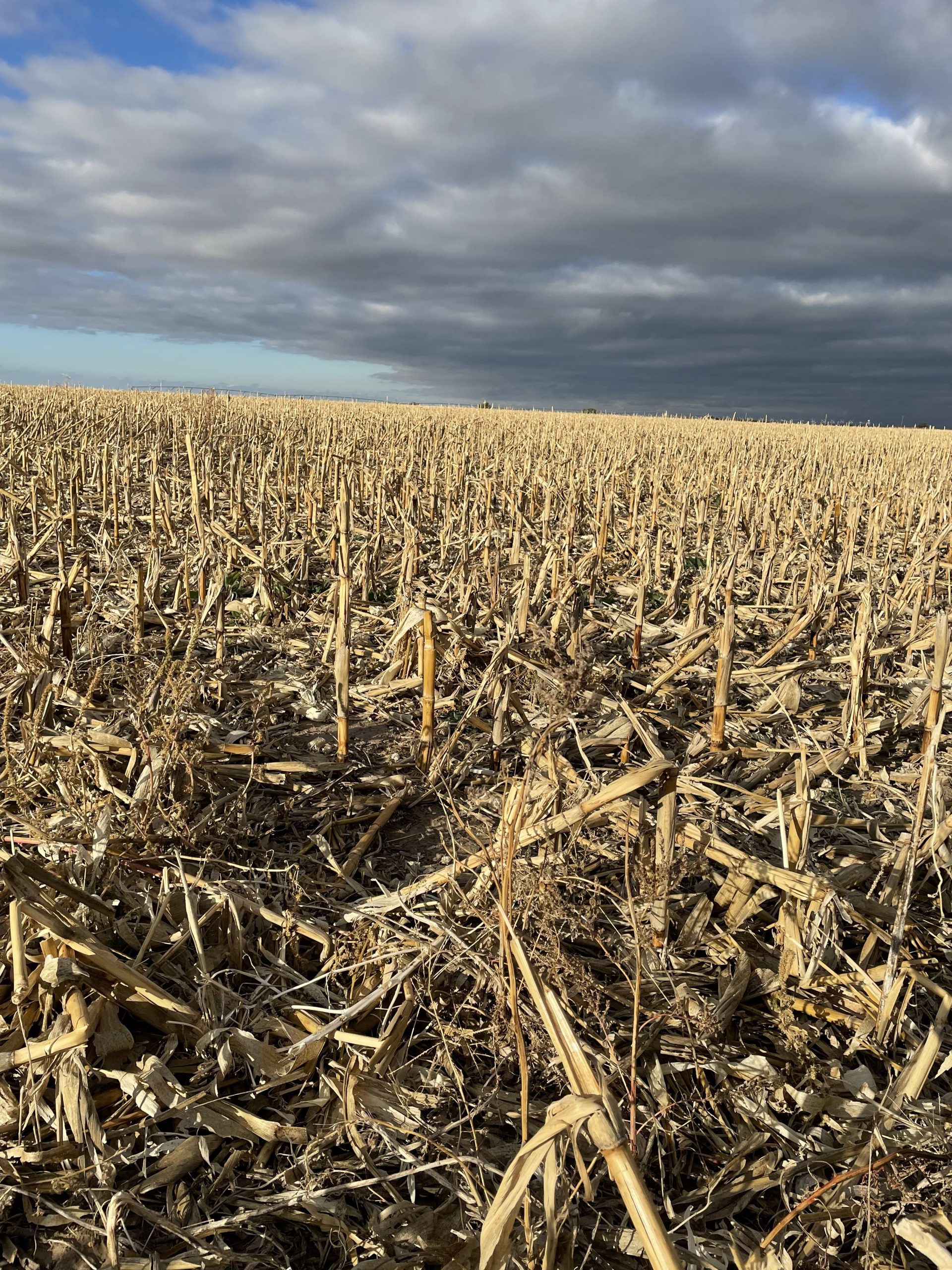K-State beef cattle experts share nutrition advice for herds grazing crop residues in the winter
Many know the key to good health is eating a balanced diet, and in the case of cattle grazing cornstalks, their diet may need to be adjusted as the quality of the forage deteriorates, according to the experts at the Kansas State University Beef Cattle Institute.
Speaking on a recent Cattle Chat podcast, K-State beef cattle nutritionist Phillip Lancaster encouraged producers to walk the fields periodically to assess the quality of the feed resource.
“When producers first turn out cattle on cornstalks, they should take note of the amount of leaves and husks available to the cattle to graze and then as the season goes on, they should continue to walk the fields to assess the quality of that feed resource and adjust accordingly,” he said.
Lancaster said that if there is too much moisture in the field, the cornstalks will turn black on the ends and the cattle will appear more hungry.
“Cattle that are hungry will be reaching through the fence,” Lancaster said.
Eventually, they will lose a body condition score, but Lancaster said that typically will take 1 to 2 months before it is noticeable to the producer.
To keep that from happening, Lancaster said the cattle need to be supplemented with protein when they are first turned out to graze the cornstalks. As the amount of corn residue declines, the herd may need additional supplementation.
“If the cornstalks are deteriorating, my next step is to start supplementing the cattle with hay,” Lancaster said. “The key is to move the hay to different locations in the field by either rolling out the bales or moving where the bale is placed to keep the cattle from creating a spot that will have a lower yield because the ground is compacted.”
He also urged producers to watch the amount of moisture the field is absorbing.
“If the cattle are sinking in 2 to 4 inches into the ground then producers should move the cattle to a dry lot,” Lancaster said.
For those who are feeding supplemental hay, K-State veterinarian Bob Larson said it is important to know the quality of the hay they are offering the cattle.
“There is a lot of variation in hay quality so it is important to assess the quality of the hay as a feed resource,” Larson said. “Hay that is harvested late in the season will not be as high in quality as hay that is cut earlier in the summer.”
He said if the hay fed to the herd was grown by the producer, they would likely have a good idea about the hay quality. But if the hay is purchased, it might be beneficial to conduct a forage test before feeding it to the herd.
Lancaster agreed with the forage test recommendation. He also said cattle will consume hay until they are full whether or not the hay is high quality, so it is important to take a look at the manure as well.
“If a producer notices manure piles that are dry and piled high, that is an indication that the cattle may not be getting enough nutrients from the hay and more protein should be added to the diet to help them better digest that hay,” Lancaster said.




